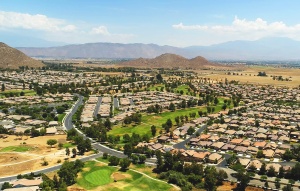To capitalise on the appeal of US real estate in promising parts of the country, Barry Dluzen of Walton Global Holdings explains the due diligence roadmap for asset owners to follow.
Finding land to buy is not difficult in a country as large as the US, especially while the economy continues to boom. However, investing in this asset, in a prudent way, takes time and understanding.
This is a formula many Asia-based asset owners need to pay attention to. Amid their desire to diversify their portfolios, both in terms of a broader range of alternatives and geographically, being cognisant of the dynamics of the local markets is critical to achieving risk/reward objectives.
“Finding the right land to acquire and develop requires a rigorous process where a lot of time is spent reviewing all aspects of a property. This underwriting process is most effective with a combination of an experienced asset manager’s review and confirmation by qualified third-party professionals,” says Barry Dluzen, senior vice president of Walton Global Holdings.
All signs point inland
Dluzen’s role is exclusively to source and underwrite deals. And within his focus in the South-west US, he says among the best opportunities at the moment are in a region known as the Inland Empire or Riverside and San Bernardino counties, approximately 60 kilometres from the west coast of the US in California.
From an investor’s point of view, California has a number of positives. It has a $2.7 trillion economy and is the most populous state in the US with more than 39.25 million residents, according to the latest census figures. US government statistics show the state has one of the fastest job gains in the country, with a year-over-year increase of 356,800 jobs, as of April 2018, and ranks third in the US, year-to-date as of mid-2018, in terms of building permits issuance according to US Census Bureau’s building permits data.
Dluzen points to specific drivers fuelling demand in Riverside County. These include a growing population, accelerating job growth and sales price appreciation. These fundamentals are increasing the pace at which housing supply and vacant lots are dwindling, which in turn is spurring new housing demand and escalating prices.
“People like to live in California, but property in coastal locations is unlikely to have less than a $1 million price tag,” he explains.
Affordability is crucial for millennials, young families and active adults, in particular. For example, in West Riverside County, homes are roughly a third of the price of something of similar size elsewhere in southern California. “We see some great opportunities in the Inland Empire for these types of buyers,” adds Dluzen.
Inevitably, jobs have moved in that direction too. Industrial and commercial zones, including distribution, logistics and other centres, have sprung up in greater numbers in inland areas due in part to lower costs and relatively close proximity of utility services and infrastructure like inter-state highways, rail lines and air transport.
Check-list for smart investors
In spite of these strong positive trends, potential asset owners based thousands of miles away in other states and countries need to apply strict criteria when investigating whether or not to invest in US real estate.
The local political environment is a key factor. Ensuring that a pro-development stance with a relatively swift permit approval process is in place is an important first step towards achieving a comfort level indicating that support for growth exists. The second step is understanding the infrastructure in place and new infrastructure required – both in terms of existing transportation corridors as well as plans to build new ones. Next, essential utility services such as accessibility to sewerage, water and power lines need to be looked at as part of the need for determining the potential for further development.
Another key factor is understanding the market area in terms of house pricing, buyer profile and expected demand.
Proximity to amenities such as retail and lifestyle options, open space, transportation corridors and employment centres also require consideration as part of an investment check-list.
Once these factors are taken into account, a potential investor needs to align with a partner who can deliver on all of the above to find properties with high future potential for development.
“This is the objective of our company, to deliver well-researched, strategically situated properties to potential investors in a no-hassle, easy-to-understand way,” says Dluzen.
The firm carefully researches its recommendations, he adds. “We vet deals thoroughly to make sure they work from a numbers point of view. Paying the right price for the right deal is an art, and sometimes this means we need to drop a deal for a seller to see that for themselves.”
Walton’s on-the-ground advantage also means it can help investors in Asia benefit from relationships and networks that exist not only when buying the land, but also as part of the exit process. As Dluzen explains, this also serves to mitigate the risk of declining asset values in the scenario of a bubble in the inland rush.
“Well-positioned assets will remain solid over time and have a lower risk profile even in a softening market,” says Dluzen.
This article originally appeared on AsianInvestor.



